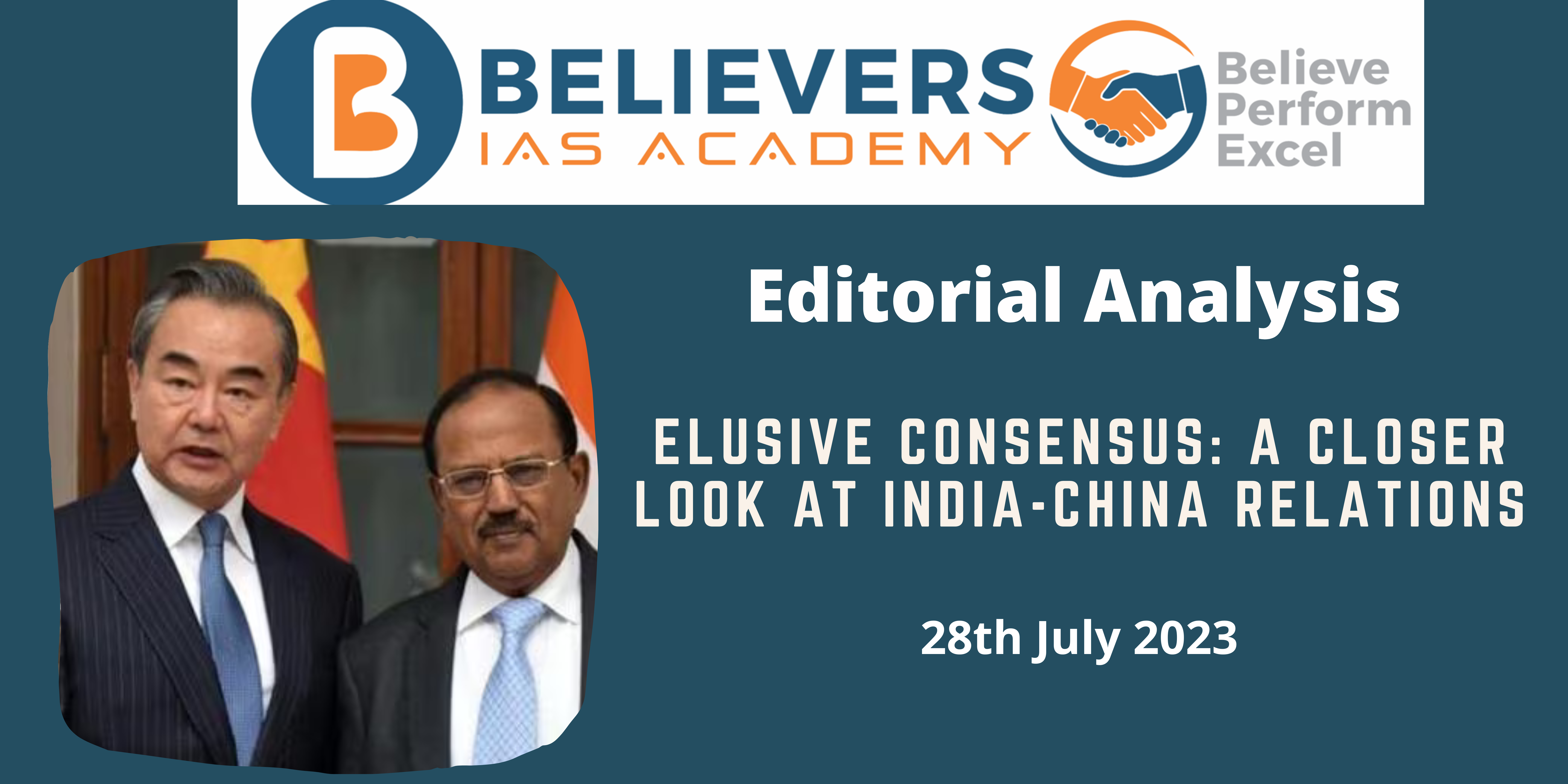Elusive Consensus: A Closer Look at India-China Relations
Context:
The recent high-level engagement between India and China, featuring National Security Adviser Ajit Doval and Chinese diplomat Wang Yi, has once again highlighted the profound divergence in their perspectives on the state of bilateral relations.
Relevance:
GS-02 (Bilateral Relations)
Prelims:
- Line of Actual Control (LAC)
Mains Questions:
- Examine the government’s approach to handling relations with China and the border situation. How has opacity and defensiveness impacted public understanding of India’s broader approach to China? Discuss the contradictions in trade and investment policies toward China. (250 words)
Dimensions of the Article:
- Contrasting Perspectives: India-China Dialogue
- The Imperative for Informed Public Discourse
- The Border Situation: Demchok and Depsang
Contrasting Perspectives: India-China Dialogue
- The recent meeting between National Security Adviser Ajit Doval and top Chinese diplomat Wang Yi in Johannesburg unveiled starkly different viewpoints on the state of India-China relations.
- While Mr. Doval expressed India’s concerns about the situation along the Line of Actual Control (LAC) and the erosion of the basis of ties, China focused on a broader picture and called for a return to a track of healthy and stable development.
- Additionally, China revealed the existence of a purported “Bali consensus,” a noteworthy development not previously disclosed by either side.
- This disparity in narratives underscores the need for the government to adopt a more transparent approach to communication regarding the relationship with China.
The Imperative for Informed Public Discourse
- Opacity and defensiveness have become the hallmarks of the Indian government’s response to queries concerning the border situation and its overall approach to China.
- Since the tensions that emerged in April 2020, the lack of clear and candid information has hindered public understanding of the intricacies surrounding India-China relations. A significant example of the contradictory nature of policies can be observed in the case of trade and investment.
- On one hand, trade with China reached record levels, fueled by imports of Chinese machinery, while on the other hand, the government imposed bans on over 200 Chinese apps, including TikTok. This dichotomy raises questions about the coherence of India’s stance towards its neighbor.
The Border Situation: Demchok and Depsang
- Despite 18 rounds of talks, the situation along the Line of Actual Control (LAC) remains enigmatic, with little clarity on the ongoing issues in Demchok and Depsang – the last two friction points.
- Though buffer zones have been established in five other areas, the terms and conditions of these arrangements and the subsequent withdrawals by both countries remain shrouded in secrecy.
- Such ambiguity and lack of comprehensive information leave the public grappling for insights into the actions taken by both nations to stabilize relations and ensure peace along the border.
Way Forward:
- In dealing with India’s largest neighbor, secrecy and ambiguity are no longer tenable strategies. As India seeks to establish a lasting and stable relationship with China, the government must prioritize transparent communication with the public.
- Informed citizens can play an active role in understanding the complexities and challenges in this crucial bilateral relationship. A clear and open dialogue can help bridge the gap between official statements and public perception, fostering a more robust national discourse on India’s approach to China and its vision for the future.
Conclusion:
The divergence in perspectives presented by India and China during their recent high-level engagement highlights the urgent need for a more transparent approach to communication. Opacity and defensiveness in the government’s responses to questions about the border situation and broader China policies have contributed to a lack of clarity and understanding among the public. With India-China relations holding significant importance, fostering an informed public discourse is imperative. By embracing transparency and shedding light on complex issues like the LAC situation and trade policies, the government can pave the way for a more enlightened understanding of the challenges and opportunities in the bilateral relationship. Only through such open dialogue can India and China achieve an elusive consensus that fosters lasting peace and stability in the region.




